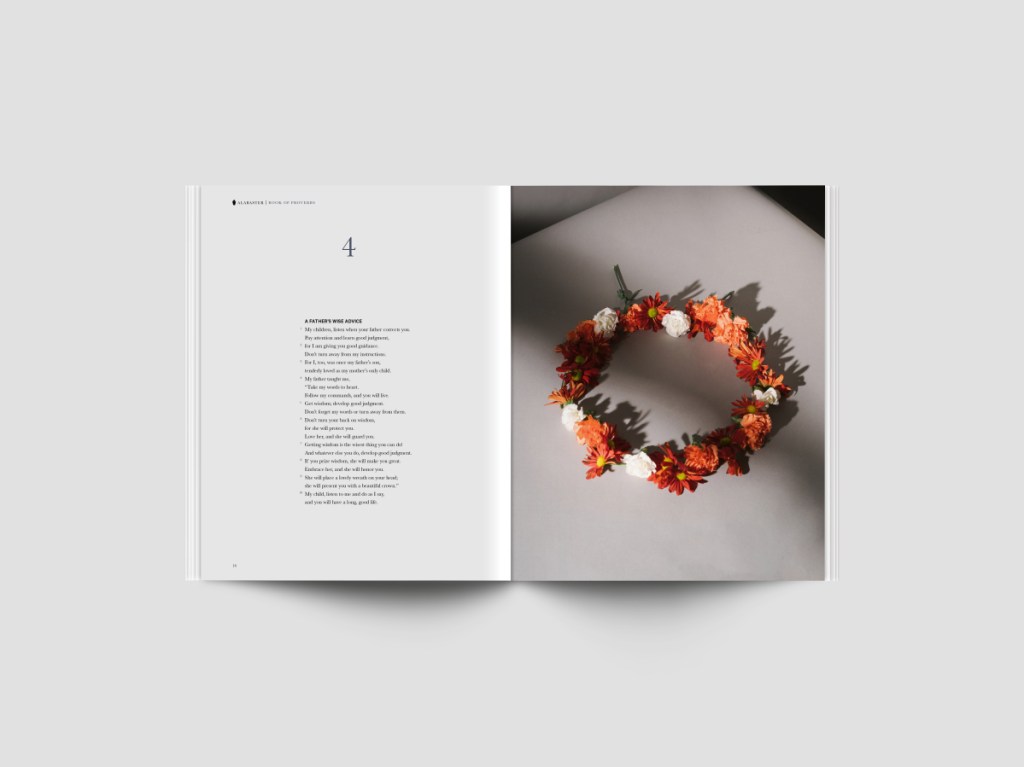Brian Chung still remembers the first time he tried to read the Bible.
A 20-year-old college student at the University of Southern California at the time, he’d recently converted to Christianity and was eager to plunge into the Scripture that he’d heard so much about.
There was just one problem, Chung recalls: “I didn’t want to read it.”
The text was small and serious-looking, each line corralled inside densely packed, numbered columns devoid of imagery – like citations at the end of a biology textbook. Inside, the pages were toilet paper thin. Outside, the cover was solid black and intimidating.
For an artistic college student studying communications, design and advertising, the “good book” looked surprisingly bad.
“There were 20 pages before you actually got to Genesis,” Chung said, remembering how impatient he felt. “As an artist and designer and a reader, I was thinking, ‘This is not good design.’ “
Over the past 2,000 years, scholars say, no other book has been reimagined and reinterpreted as many times in history as the Bible. Each iteration – from early translations in Greek to the King James edition – was created to reach a new audience.
Five hundred years after the modern printing press spread biblical text worldwide, the book is struggling to reach one of its toughest audiences yet: Millennials, a generation of expressive, digital natives who are increasingly likely to read on a tablet than open a book. They are also far less likely to read or trust the Bible than older generations, surveys show, and their skepticism is at the forefront of Americans’ deteriorating relationship with the ancient text.
Now Christian publishers are scrambling to repair that relationship by making the Bible more accessible and attractive to a generation of young people for whom the written word no longer resonates as strongly. Their efforts are a way of embracing the present, but also a nod to the Church’s medieval past, when an illiterate populace relied on beautiful frescoes, sculptures and majestic cathedrals to understand the Christian message.
A decade after his failed attempt at reading, Chung has turned his early aversion to the Bible into a growing business. He’s half of a duo trying to make the Bible “millennial-friendly,” sharing their ancient faith with a new generation shaped by an unending stream of visual content and social media stimulation.
To do that, his Los Angeles-based start-up, called Alabaster, places the full text of each biblical book inside publications that resemble chic, indie lifestyle and design magazines – like those you might find on your most fashionable friend’s coffee table. Alabaster uses the New Living Translation of the Bible.
Negative space is plentiful, and the text is a stylish Sans Serif font, dwarfed by the kind of moody, still-life images that proliferate on Instagram.
For inspiration, the partners didn’t look to contemporary Christian artists or the Catholic Church, but urbane magazines like Cereal, Kinfolk and Drift. They also studied hip, era-defining brands like Warby Parker, Harry’s, Shinola and Swedish watchmaker Daniel Wellington. Those companies, they say, understand something that the discerning millennial mind treats as, well, Gospel: the quality of a product’s visual packaging is just as important as the quality of the product itself.
The Bible may be a holy book, Chung realized, but it’s also a “content-rich lifestyle brand” – one in desperate need of a modern upgrade.
“Visual culture is everything for millennials,” Alabaster co-founder Bryan Ye-Chung said. “That’s what is important to us, too, so we wondered why can’t a faith-based product take advantage of that space as well?”
The start-up is not without competition. Absorbing Christian teachings without opening a Bible or stepping inside a church has never been easier. Instagram has helped turn megachurch pastors like Carl Lentz and Steven Furtick into fashion-forward “influencers” with millions of followers. The number of people who have downloaded mobile apps offering thousands of biblical translations, texts and access to podcasts is now in the hundreds of millions. Ancient manuscripts like the Dead Sea Scrolls have been digitized for online consumption, and now anyone with Internet access can listen to Bible readings in the book’s original languages – Hebrew, Aramaic and Greek.
Why read about the Holy Land when you can strap on a virtual reality headset that offers 3-D tours of sacred Christian sites? If VR isn’t your thing, you can download apps that pair smartphone photos with Bible verses, creating shareable content for social media. If you don’t want to read the Bible, then Alexa, Amazon’s virtual assistant, can do it for you. As faith-based organizations seek to share their message in new ways, even their job postings have begun to resemble those from Silicon Valley tech firms, with organizations recruiting product designers and software engineers.
“We’ll do anything short of sin to reach people who don’t know Christ,” according to the Life.Church website. “For us, that means leveraging the latest technology, pursuing new ideas, and staying close to God’s Word.”
The digital products may be new, but the sensibility is not, according to Matthew Engelke, a professor of religion at Columbia University. The Protestant impulse has always been to expand outward, Engelke said, finding new ways to engage new groups of people. The rise of digital culture over the past 20 years has heightened that impulse, he said.
For today’s evangelicals, Engelke said, a rising tide of secular atheism is no longer considered the greatest threat to the church.
“It’s the stuck in the mud old Christian who doesn’t move with the times and refuses to recognize that you can’t get people into church reading the King James version in the evenings on the radio anymore,” Engelke said. “Times have changed and many Christians recognize they need to change with the times.”
As millions of Christians find new avenues to explore their faith online, companies like Thomas Nelson, the largest Christian publishing house in the world, say the appetite for physical copies of the Bible remains strong, but customer expectations are rapidly changing because of digital culture. No longer interested in their grandparents’ plain black Bibles, younger customers have begun requesting books with sewn binding, environmentally friendly paper, gold gilding and pricey goatskin covers. The Bible publisher Zondervan has introduced hand-painted covers inspired by Etsy artists, as well as shimmering images that change when the page is turned.
Copy the Story LinkSend questions/comments to the editors.





Success. Please wait for the page to reload. If the page does not reload within 5 seconds, please refresh the page.
Enter your email and password to access comments.
Hi, to comment on stories you must . This profile is in addition to your subscription and website login.
Already have a commenting profile? .
Invalid username/password.
Please check your email to confirm and complete your registration.
Only subscribers are eligible to post comments. Please subscribe or login first for digital access. Here’s why.
Use the form below to reset your password. When you've submitted your account email, we will send an email with a reset code.